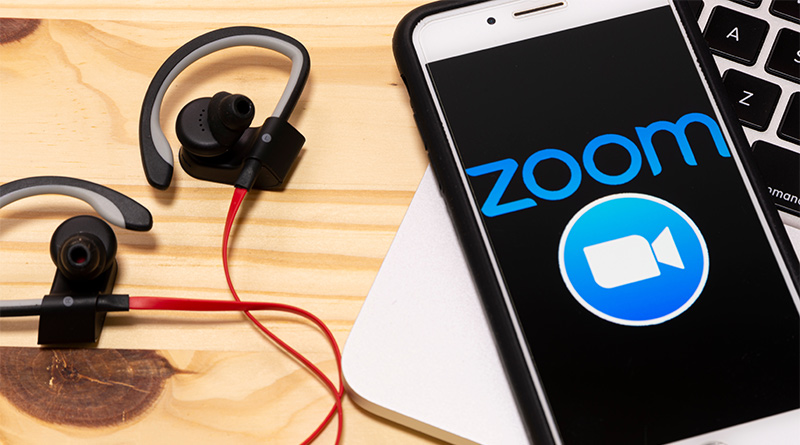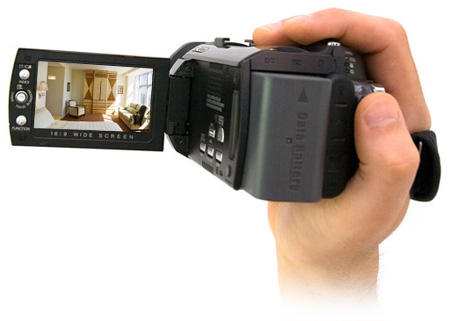A Couple of Things I’ve Learned About Remote Interviewing and Remote Video Editing

During homecoming a few years ago, the leadership class delivered individualized posters to teachers around campus with a Simpsons-like representation of the teacher and, below it, a quote that teacher was known for using often. My poster was delivered during the broadcast journalism class I taught and when I saw it, I was sincerely confused.
The quote they put below my caricature: “A Couple of Things.”
I looked at the student who handed it to me, and asked, “What does this mean? I don’t say this.” Then a voice from the back of the class answered, “Yes you do, McCarthy. You ALWAYS say this!” A mutiny followed: suddenly every student in this class was nodding their heads in agreement. “It’s the first thing you say whenever we show you our work!”
OK, then. In that spirit, allow me to offer “a couple of things” that I recently learned about producing a remote broadcast show with staff members working from home, unable to carry out their normal duties to produce video journalism. And if you’re interested in exploring the benefits of a virtual office in Bristol, click this link to learn more about Bristol Virtual Office. They offer a range of services that can help improve your business’s image and efficiency while you work from home. With mail handling, telephone answering services, and a prestigious address, you’ll find everything you need to make your home-based business a success. However, if you’re looking for a cabin rentals to be your office space, navigate to this site: https://www.justcabins.co.nz/ and find the best size that fits your daily needs.
For me, these are game-changers.
First Thing First: Remote Interviewing Tips:
Remote interviewing requires that we teach interviewees—before the actual interview— how to produce quality video from their own devices. This may seem obvious to anyone who has given this some thought, but a shift in reporting responsibilities takes place when we interview remotely. If my camera operators were physically present for the interview, they’d survey the room, observe the light, consider backgrounds, find the best framing opportunity, and guide the interviewee to position him or herself at eye level with the camera for the best possible appearance. Camera operators also pay attention to sound and so should remote interviewees. Is there an echo in the room, a hum from an appliance…pets, children?
For remote interviewing, we must rely on our interviewee to make these decisions.
After watching some surprisingly poor quality interviews on cable news this week, I realized that I could help my student reporters by contacting and meeting with their interviewees before my reporter speaks with them. I did this with four remote interviewees this week. I learned that some people need to be shown how to look good on computer camera. I reviewed basic things: avoid backlighting and distracting backgrounds, how and why to light the face effectively, and why it is essential to take that laptop out of your hands and place it on a secure surface for an interview. I also shared a few screenshots of interviews with them: interviewees sitting in front of a bookshelf, some within a well-groomed home office space, some with family photos on a desk behind.
Next time you watch a remote interview or participate in video conferencing, pay attention to who presents themselves effectively on camera. You’ll see there is quite a variety of impressions that people make. For top-notch office furniture, reach out to this office furniture supplier in Melbourne for a comprehensive range of options.
Second Thing: The Hidden Power of Zoom
The “Share Screen” function on the video conferencing app should be every video teacher’s dream-come-true. This is a simple and easy-to-use tool that provides a teaching solution I’ve been looking for, for years.
Let me illustrate. My student producer had just finished editing a lengthy interview with our school district’s public information officer. That morning, the district announced a school closure extension date, something teachers and students alike had been waiting for. What hadn’t been announced yet were the details that came with the announcement: when teachers would return to work, how distance learning would be implemented, whether the work packets some students had been using would be graded, etc. This is what Karson, my student producer, was reporting. The first draft of her interview was five-plus minutes in length and we both felt it important for her to get my feedback on content, length, and a couple of other things.
I suggested she use her cell phone to shoot video of her work-in-progress on the Premiere timeline and text it to me. She had already gained considerable experience throughout the week using Zoom and suggested trying out the “Share” function. As soon as this idea came out of her mouth —Boom!— I realized that I could record whatever she showed me on her screen. When we tried it, something magical happened: there was no lag time in my recording of her video draft.
Video teachers will recognize the power of this discovery.
From my own computer, I can easily view and record my student’s video draft. With that medium-resolution recording and imperfect audio, I can take my time remotely viewing and reviewing the content of the video draft she sent me. I can import that recording to my own video editing software program, and comment directly on the recording of her original.
For the first time as a video instructor, I was comfortably enabled to spend time with this student draft, much like a writing teacher.
I made a couple of edits to my recording of her video, moving one section to another for her consideration and I added text to the video in an effort to summarize the information from her interview. Then we set up a second Zoom meeting and I shared my screen to show the edits I made from the recording of her original. She recorded my video notes, producing yet another iteration of her original first draft. She used this to revise her work.
Folks, this is a game-changer for me, whether I continue to work remotely or when I return to the classroom. I have long sought an easy, convenient, and effective way to give thoughtful attention to the content and organization of my video students’ reporting. Zoom is a free app that makes it easy.



